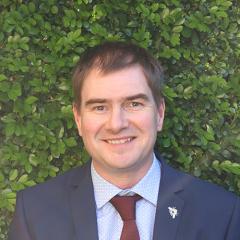The rampant use of antimicrobials, pharmaceuticals, and chemicals by humans has accelerated the spread of antimicrobial resistance, leading to the rapid emergence of multi-drug resistant organisms. This global health crisis results in over 2.8 million infections and 35,000 deaths annually in the United States alone, with economic repercussions exceeding US$35 billion. To combat this, there's a pressing need for standardized global surveillance strategies to effectively monitor and address this escalating threat. In Australia, current surveillance of antimicrobial resistance primarily utilizes data on drug consumption obtained from surveys or national databases, such as the Australian Pharmaceutical Benefits Scheme (PBS). However, these sources often provide an incomplete picture, lacking in both spatial and temporal detail and failing to account for the use of non-prescribed antimicrobials.
Wastewater-based epidemiology (WBE) presents a promising solution by analysing wastewater influents to quantify a community’s total antimicrobial load, offering a comprehensive view of antimicrobial consumption. This project aims to refine chemical analysis techniques for detecting antimicrobial biomarkers in wastewater, enabling a nationwide assessment of antimicrobial use through WBE. By offering spatial and temporal insights, the study will identify key factors driving antimicrobial consumption and contribute to the development of a National Wastewater Antimicrobial Resistance and Use Surveillance Method. Ultimately, this initiative will inform policy decisions aimed at reducing antimicrobial resistance and evaluate the effectiveness of these strategies, marking a significant step forward in global health surveillance.
Outcomes
We have developed a quantification method for 109 antimicrobials and their metabolites using ultra-performance liquid chromatography coupled with tandem mass spectrometry by direct injection. This method has been applied to municipal wastewater across Australia. An overall of 56 antimicrobials and their metabolites were detected in wastewater influent and 45 in effluent. Moreover, the antimicrobial use was cross-referenced with Census data to further understand the population’s antimicrobial use with socioeconomic status.
Research Outputs
Li, J., O’Brien, J.W., Tscharke, B.J., Verhagen, R., He, C., Shimko, K.M., Shao, X., Zhai, N., Hulleman, T., Mueller, J.F. and Thomas, K.V., 2025. Occurrence, Removal, and Risk Assessment of Antimicrobials and Their Transformation Products in Effluent from Australian Wastewater Treatment Plants. Environmental Science & Technology.
Conference Abstracts
Li, J., O’Brien, J., Tscharke, B., He, C., Shimko, K., Shao, X., Zhai, N., Mueller, J. & Thomas, K. National reconnaissance of antimicrobial occurrence in Australian wastewater and their socioeconomic correlates, What’s In Our Water, Canberra, Australia, 29-31 October 2024.
Li, J., O’Brien, J., Tscharke, B., He, C., Shimko, K., Zhai, N., Mueller, J. & Thomas, K. National reconnaissance of antimicrobial occurrence in Australian wastewater and their socioeconomic correlates, SETAC Asia-Pacific 14th Biennial Meeting, China, 21-25 September 2024.
Li, J. Understanding Antimicrobial Use and its Environmental Impacts in Australian Wastewater, SAAFE CRC 2024 AMR Solution Summit, Adelaide, Australia, 17-19 September 2024.
Li, J., O’Brien, J.W., Tscharke, B.J., He, C., Shimko, K.M., Shao, X., Zhai, N. Mueller, J.F. & Thomas, K.V. National reconnaissance of antimicrobial occurrence in Australian wastewater and their socioeconomic correlates, International Mass Spectrometry Conference 2024, Melbourne, Australia, 17-23 August 2024.
Li, J. A sensitive high-throughput direct injection liquid chromatography-tandem mass spectrometry method for the surveillance of antimicrobials in wastewater, Testing the Waters 6 Conference, Oxford, United Kingdom, 26-27 June 2023.
Li, J., O’Brien, J.W., Shimko, K.M., Thomas, K.V. A sensitive high-throughput direct injection liquid chromatography-tandem mass spectrometry method for the surveillance of antimicrobials in wastewater, Queensland Mass Spectrometry Symposium, Brisbane, Australia, 1-2 December 2022.
Li, J., O’Brien, J.W., Shimko, K.M., Thomas, K.V. A sensitive high-throughput direct injection liquid chromatography-tandem mass spectrometry method for the surveillance of antimicrobials in wastewater, Queensland Annual Chemistry Symposium, Brisbane, Australia, 4 November 2022.
Awards
- 2024 SETAC Student Research Grant, funded by the Society of Environmental Toxicology and Chemistry (SETAC), for the abstract on Understanding antimicrobial use and its environmental impacts in Asia-Pacific wastewater.
- 2024 SAAFE CRC AMR Solutions Summit, Adelaide, Australia, Top 3 Poster Award.



